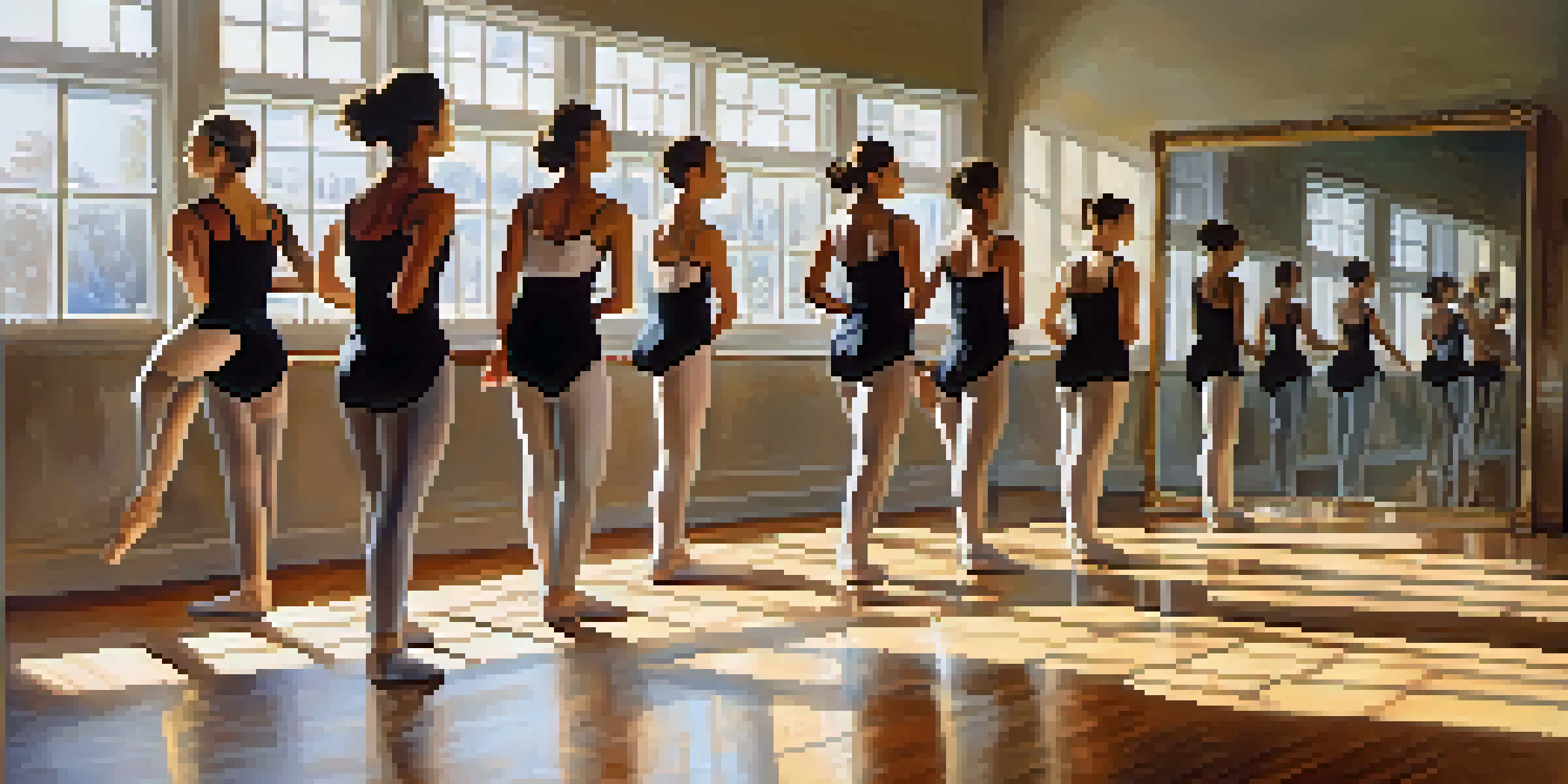The Science Behind Dance and Emotional Intelligence Development

Understanding Emotional Intelligence and Its Importance
Emotional intelligence (EI) refers to the ability to recognize, understand, and manage our own emotions while also empathizing with others. This skill is crucial in personal relationships, workplaces, and social interactions. Developing EI can lead to better communication, conflict resolution, and overall mental well-being.
Dance is the hidden language of the soul.
Unlike traditional intelligence measures, which focus on cognitive abilities, EI emphasizes the emotional and social skills that can enhance our lives. Think of it as the 'soft skills' that help us navigate through various social landscapes. This is where dance comes into play, acting as a medium through which we can hone these essential skills.
By engaging in dance, individuals can practice emotional awareness and regulation, two key components of emotional intelligence. Whether it's the joy expressed in a salsa or the sadness conveyed in a slow waltz, dance allows us to explore and express our emotions creatively.
The Connection Between Dance and Emotional Expression
Dance is often described as a universal language that transcends cultural barriers. Through movement, we can express feelings that may be hard to articulate verbally. For many, dance becomes a therapeutic outlet, allowing for the release of pent-up emotions and fostering emotional healing.

Consider a dancer performing a piece inspired by heartbreak. Each movement tells a story, conveying layers of sorrow and resilience. This physical expression not only allows the dancer to process their emotions but also invites the audience to connect and empathize with the experience.
Dance Enhances Emotional Intelligence
Engaging in dance fosters emotional intelligence by improving awareness, empathy, and social skills.
Thus, dance serves as a powerful tool for emotional expression, helping individuals develop a deeper understanding of their own feelings and those of others. This practice enhances emotional awareness, a foundational aspect of emotional intelligence.
How Dance Improves Empathy and Social Skills
Engaging in dance often requires collaboration with others, whether in pairs or groups, which inherently fosters social skills. Through this collaborative effort, individuals learn to read body language, recognize social cues, and respond appropriately in various situations. These interactions are crucial in developing empathy, a vital component of emotional intelligence.
The only way to make sense out of change is to plunge into it, move with it, and join the dance.
For instance, in partner dancing, both dancers must remain attuned to each other's movements and emotions. If one dancer feels hesitant, the other must adapt, showcasing the importance of responding to emotional signals. This practice extends beyond the dance floor, translating into everyday social interactions.
As individuals refine their ability to empathize through dance, they also cultivate stronger relationships. This enhanced understanding of others' emotions leads to better communication and conflict resolution skills—key elements of emotional intelligence.
The Role of Rhythm and Movement in Emotional Regulation
Rhythm is integral to dance, and it plays a significant role in emotional regulation. Engaging with rhythm can help individuals manage their emotional states, as the physical act of moving to music can be incredibly grounding. For many, dancing can serve as a form of mindfulness, bringing focus to the present moment and reducing stress.
Imagine a scenario where someone is feeling overwhelmed. Turning on their favorite upbeat song and dancing can transform their mood, allowing for a positive emotional shift. This practice of using movement to influence emotions is a powerful tool in emotional intelligence development.
Movement Aids Emotional Regulation
Rhythm and movement in dance serve as powerful tools for managing and regulating emotions effectively.
By understanding how rhythm and movement affect our emotions, we can harness these elements in our daily lives. This awareness fosters emotional regulation, helping us respond to challenges with a calmer and more balanced mindset.
Dance as a Tool for Building Self-Awareness
Self-awareness is at the core of emotional intelligence, and dance provides a unique avenue for cultivating this skill. When we dance, we engage in a form of self-expression that reveals our inner thoughts and feelings. The act of moving to music can help individuals connect with their emotions, fostering a greater understanding of themselves.
For example, a dancer may notice they feel more alive and energetic when performing certain styles of dance, while others might evoke feelings of nostalgia or sadness. This reflection during and after dancing allows for deeper insights into personal emotions and triggers.
By regularly engaging in dance, individuals can enhance their self-awareness, leading to improved emotional intelligence. This journey of self-discovery not only enriches personal growth but also facilitates more meaningful connections with others.
The Therapeutic Benefits of Dance in Emotional Growth
Dance therapy has emerged as a recognized approach in mental health care, demonstrating how movement can facilitate emotional growth and healing. This form of therapy encourages individuals to express themselves through dance, providing a safe space to explore complex emotions. Many have found that this creative outlet can lead to significant breakthroughs in emotional understanding.
Research shows that those who participate in dance therapy often experience reduced anxiety, improved mood, and increased emotional resilience. The connection between body and mind is emphasized, reinforcing the idea that physical movement can positively impact our emotional state.
Dance Therapy Supports Emotional Growth
Dance therapy offers a creative outlet for exploring complex emotions, leading to significant emotional healing.
Incorporating dance into therapeutic settings not only supports emotional intelligence development but also empowers individuals to take control of their emotional well-being. This holistic approach highlights the transformative power of dance in fostering personal growth.
Creating a Dance-Friendly Environment for Emotional Growth
To harness the benefits of dance for emotional intelligence, it's essential to create an environment that encourages movement and expression. This could be as simple as putting on music at home and allowing yourself to dance freely. Alternatively, joining a dance class or community can provide a supportive space to learn and express emotions through movement.
Consider hosting dance parties with friends or family, where everyone can let loose and have fun. This not only strengthens bonds but also creates opportunities for emotional sharing through dance. The more we engage in these activities, the more comfortable we become with expressing our feelings.

Ultimately, fostering a dance-friendly environment can enhance emotional intelligence development, making it an enjoyable and integral part of our lives. Embracing movement as a form of emotional expression opens doors to personal growth and deeper connections with others.